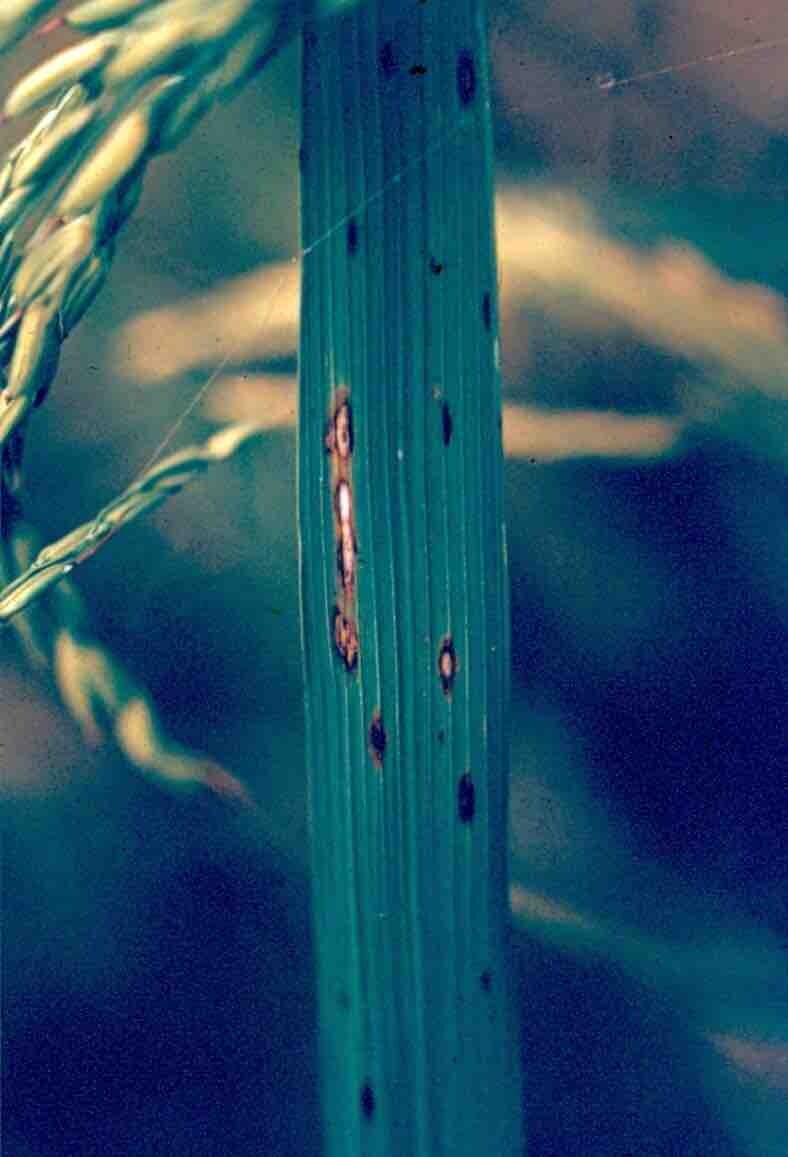Souffle de riz
Rice
The name of the disease is derived from the visual symptoms it causes to rice plants. When conditions are favorable, plant tissues become undergo necrosis and heavily infected leaves will appear burnt from a distance.
Rice blast can cause lesions on leaves, leaf collars, nods, stems, panicles and grains. In about 90% of the time, panicles and grains exhibit visual symptoms, while leaf sheets and roots do not show symptoms.
Initially, purple spots are formed on young leaves. With time, the spots become spindle-shaped. Large lesions usually develop a diamond shape with grayish center and brown margin. Infection on the necks can be fatal; it can lead to a condition called neck blast in which the entire panicle might fall over.
Rice blast disease is the most devastating plant diseases in rice. The damages it can inflict and potential yield losses are so great that rice blast disease has been ranked among the most important plant diseases in the world. Rice blast is found throughout most of the rice growing countries.
The disease favors temperatures around 24 degrees Celsius and long periods of high moisture conditions, which are commonly found throughout flooded rice fields.
The fungus produces conidia (spores of an asexual reproduction). Under windy conditions, conidia become airborne, eventually descending on other rice plants where it will germinate and cause new infections. When warm and wet weather is present, the formation of new conidia occurs within hours. Sources of inoculum include infected seeds and overwintering of spores on volunteer plants.
Utilisez des variétés de plantes et des semences résistantes à la maladie.
Il est toujours recommandé de planter des semences de haute qualité et sans maladie.
Conservez un espace adéquat : évitez de planter avec une densité excessive afin que la lumière puisse pénétrer.
Fertilisation adéquate : La surutilisation des engrais azotés n’augmente souvent pas les rendements de manière significative et peut augmenter le nombre de nouvelles infections dues à l’explosion de riz.
Assainissement: Gardez l’environnement proche des cultures en éliminant les mauvaises herbes, les débris de plantes, les parties endommagées, la croissance indésirable des plantes et les plantes à proximité qui ne sont ni cultivées ni protégées.
Les produits utilisés dans une ou plusieurs régions du monde peuvent contenir les ingrédients suivants :
hexaconazole, tricyclazole, prochloraz, carpropamide, azoxystrobine, et carbendazime.
*Names marked in red are considered to be highly poisonous to beneficial insects.
*Names marked in green are considered to be organic and IPM (integrated pest management) compatible.
Image Gallery


